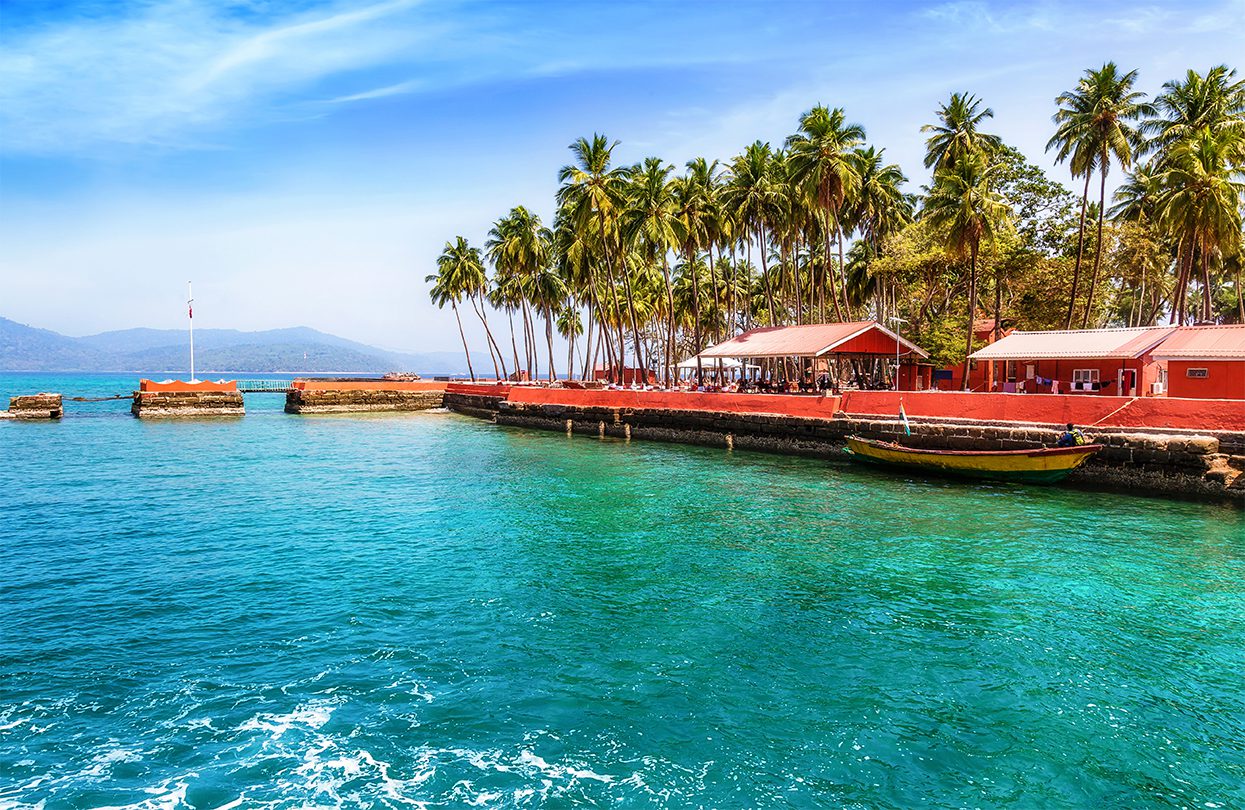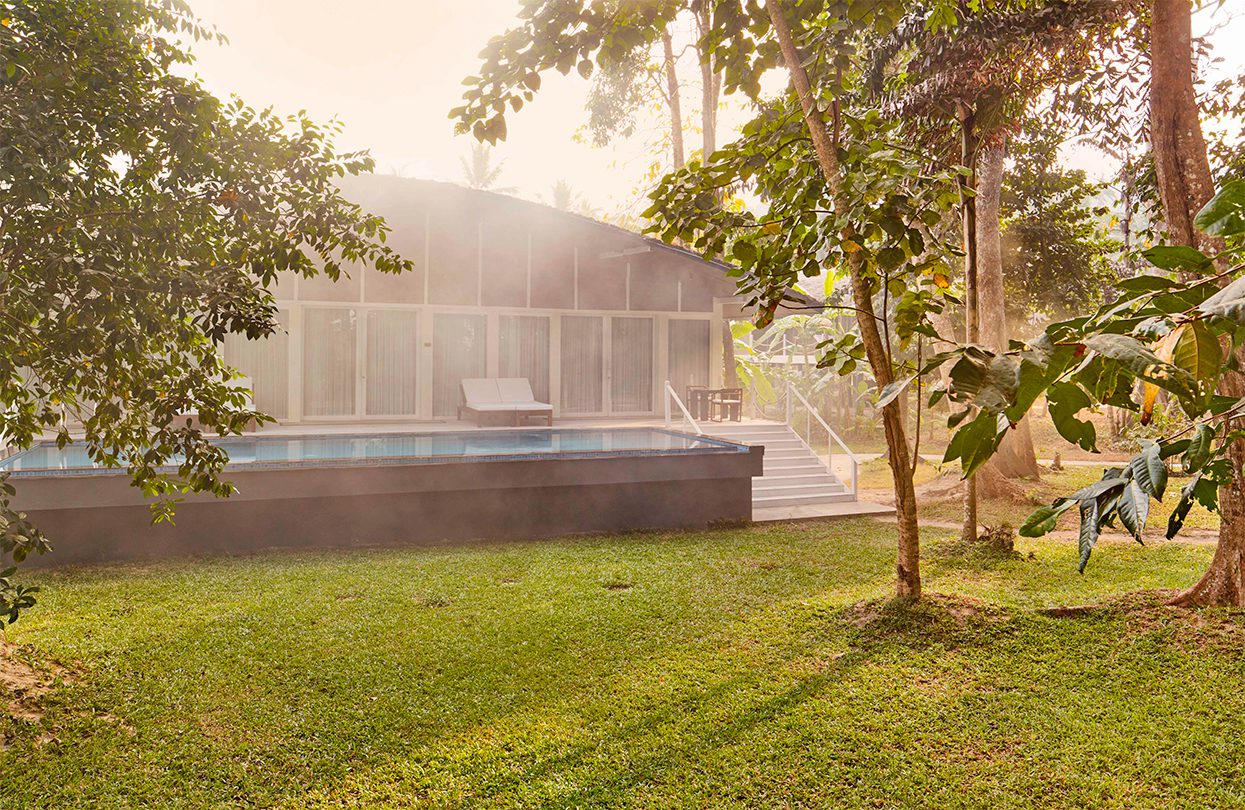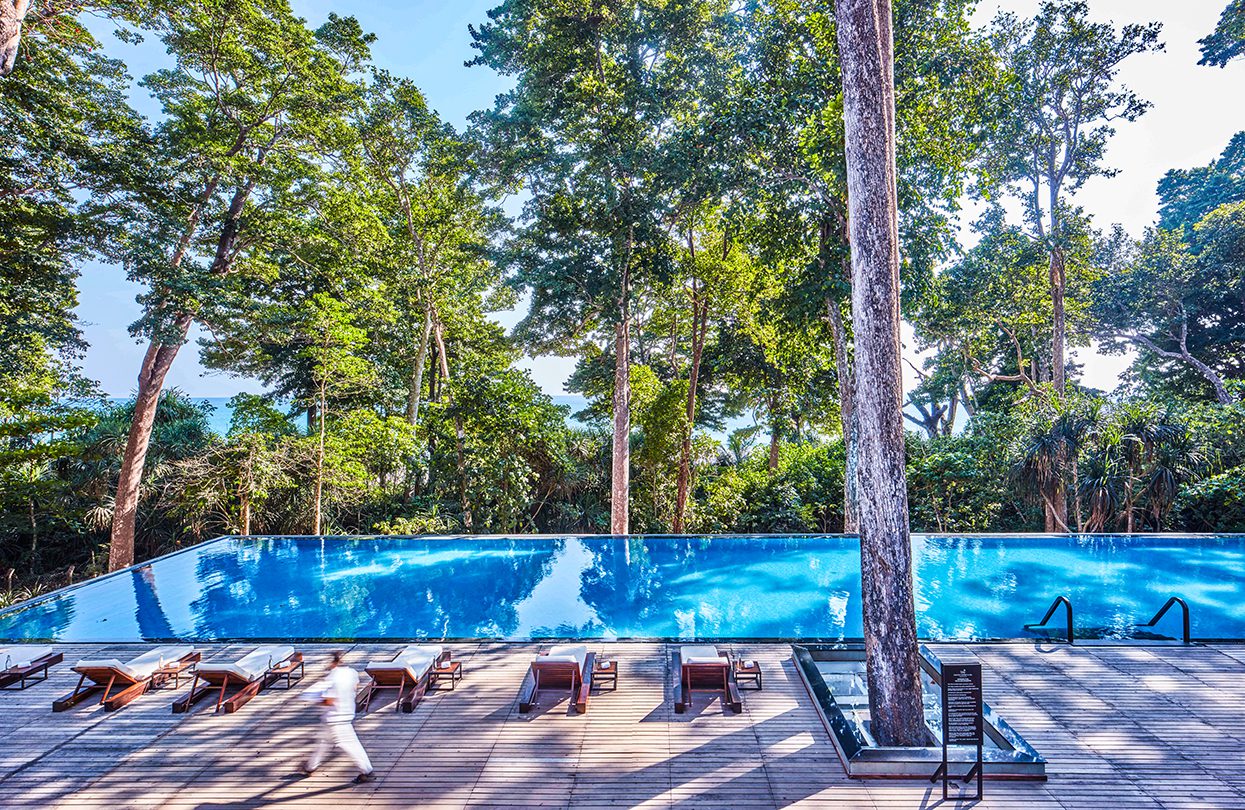Sprawling limestone caves, lush mangroves, and the sight of the dugongs in India’s unexpected archipelago
Explorer Niccolo de Conti called it the Island of Gold, beaming at the earthy terrain that shone brightly under the glaring tropical hemisphere when he landed in circa 1440. But it was mud volcanoes, not yellow metal, that comprised the chunks of lands that swirled over the blue coast of the Indian Ocean. There were more than 500 of them, each boasting with a spectacular ecosystem that cradled one of India’s oldest cultures and biodiversity.

Beautiful Ross Island beach bay at Andaman India, image by Roop Dey
Andaman has seen many of the world’s transformations, including its own, being perched atop the seismic Indian Plate together with its twin, Nicobar. But the strength of its people withstood the morphing of the land and sea, unwavering even after the December 2004 earthquake. This beautiful resilience, coupled with the region’s breath-taking backdrop, keeps wanderlusts coming back.

Taj Exotica Resort & Spa pool
One is welcomed by the mysterious whimsy of the limestone caves, or the marvellous sights of the gentle dugongs, swimming in the coastal waters of Little Andaman’s archipelago. One can be allured by the startling aurora-like bioluminescence at Havelock Islands or the white sand strip connecting the islands Ross and Smith. One can be enchanted by the thousands of colourful birds soaring about in Parrot Island, or enjoy the scene of India’s solitary active volcano in Barren Island. There are plenty of activities—kayaking through the dense mangrove forests, gliding through the surface of the Indian Ocean via seaplane, or plainly revelling in a luxury resort tucked deep inside the Radhanagar Beach.

Taj Exotica Resort & Spa pool
In this jungle-fringed perch, Taj Exotica Resort & Spa quietly gaze at the unspoiled sanctuary bearing the spirit of the old, and the comforts of the new. Surrounded by a canopy of palms, the tranquil oasis croons with its lavish treatment centres and a serene swimming pool. Concept restaurants complete the lavish experiences, while a bounty of orchards, jungle hikes, and water activities keep one constantly on their toes in navigating this unsung wonder. Caris cruz ◼
Subscribe to the latest edition now by clicking here.
© This article was first published in Feb-Mar 2020 edition of World Travel Magazine.

